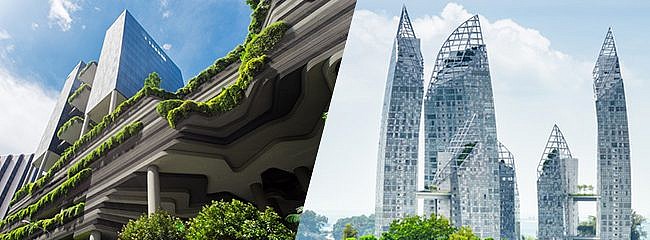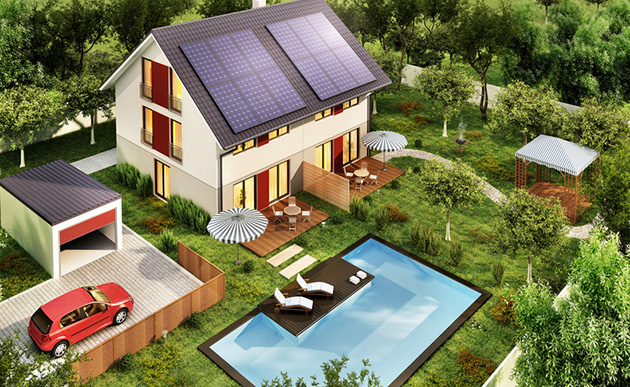
Building 3D Models for Sustainable Architecture
The world is finally tuning in to recognize the importance of going green. Climate change is one of the biggest issues of the world today, and embracing sustainability in all industries is paramount. As a sector, buildings are responsible for approximately 40% of all global greenhouse gas emissions. This has made sustainable architecture one of the key elements to a greener future.
Sustainable architecture helps stakeholders reach climate goals. It also creates an opportunity for cleaner air, more productive workplaces, and reducing waste going to landfills. All this results in better environmental stewardship. Minimizing the negative impacts of construction and building operations is key to coexisting with our natural environment.
Sustainable architecture isn’t just a lofty goal but rather it’s being empowered today thanks to modern software tools like 3D modeling.
Using 3D Models for Sustainable Architecture
The most sustainable architecture possible is via buildings that have been designed to be smart, automated, and consider energy, water, and pollution considerations on their own. A key functionality towards this end is Building Information Modeling or BIM. BIM empowers building design and construction professionals to manage whole building assets in a digital model.

These capabilities go beyond just blueprints of the building. They include all energy and water-consuming parts of the construction: HVAC systems, water pipes, transformers, electric wiring, and more. All new construction these days is incorporating BIM systems, both in the construction phase and also in operation once the construction is completed.
The proliferation of BIM has become a critical tool that enables engineers, architects, and construction firms alike to bring all desired environment and sustainability considerations into the building. These components can leave their fingerprints across every aspect of the building in unique, powerful, and even profitable ways:
- Knowing the energy required for all assets in a building will highlight where the opportunity for conservation lies and where machine failure is creating energy waste
- By incorporating BIM in the design process, conflicts and clashes will be identified at the earliest possible stage (e.g., if a sprinkler system and electric system are meant to be in the same physical spot). This allows solutions to be found before construction and prevents wasted materials.
- Fitting components built out with BIM as a tool will typically be more durable and longer-lasting, preventing the costly and wasteful need to replace components more frequently.
Taking the idea of sustainable architecture further, 3D modeling can be tapped to drive the green aspects of many other parts of the building design and construction process:
- Building structure: The purposeful structuring of a building will be best suited to incorporate inherently sustainable elements like passive lighting and heating, rooftops primed for solar panel installation, and green spaces.
- Materials used in construction: The materials used during building construction are among the most significant sources of carbon emissions not just in the AEC sector but in any industry. By minimizing excess materials used and identifying where more sustainable materials can be used like cork and bamboo, the embedded emissions associated with building materials can be minimized.

- Energy analysis: A building comes with a complex and interconnected web of energy systems, from lighting to HVAC to office equipment and more. 3D models are the first step towards modeling how these and other energy-using components of a building will interact and identify opportunities for optimization as soon as possible.
- Topography modeling: Understanding the topography of the land on which a building will be erected allows for a tangible way to look at aspects like expected sun patterns, underground components of the building, and more. That’s why sustainable 3D modeling isn’t just the building itself, but also the surrounding land.
- Coordinating the construction process: A source of wasted material in construction comes from poorly planned and timed processes that send too much material at different times than when they’re needed, risking something happening that will damage the material or delay construction deadlines. Keeping building processes in 3D models and incorporating BIM will negate these risks.
- End-of-life considerations: Sustainability isn’t just about the creation and operation of the building, but also the demolition and end of life. Using 3D modeling will allow buildings to go up mindfully in a way that ensures the end of life recycling can occur and material isn’t wasted or causes pollution.
Given all of these powerful considerations, sustainable architecture is undoubtedly gaining favor across the world. Different use case considerations have been revitalized and emphasized thanks to the possibilities that 3D modeling brings sustainable architecture:
- Urban city planning: A building is just one cog into a greater urban plan, and the best way to ensure sustainability is to connect and coordinate these different aspects of the whole urban plan. 3D modeling of the building allows for this process to take place by city planners and officials.

- Sustainable land use: The building process also includes consideration of the surrounding area, whether that means green spaces, transportation infrastructure, or otherwise. Using 3D modeling can incorporate what the land looks like today and what future sustainable measures will be put in, like electric vehicle chargers or natural parks.
- Retrofitting inefficient old buildings: Building modeling is also valuable for retrofitting old buildings, which tend to waste a lot of energy, and determining how new energy systems can be integrated. Further, the more a city can retrofit a building rather than tear down and rebuild, the most they’ll prevent unnecessary building material creation and waste.
Conclusion
Sustainable architecture is not just a trend, but it’s a new wave in engineering, construction, and design that is undoubtedly here to stay. Building owners are recognizing the financial benefits of green buildings. Architecture and design firms are seeing customers demand sustainability as a core tenet. Construction firms are reducing wasted time and money via sustainable practices.
Before sustainable designs can be put into the world, though, they must be accurately and thoroughly designed and deliberated. That’s where 3D modeling has created massive new opportunities. 3D modeling is allowing all buildings in the commercial and residential sectors to embrace sustainability.
If you’re not sure how these new opportunities may apply to you, reach out to IndiaCADworks so we can review your 3D modeling requirements and highlight the sustainability opportunities you can start tapping into right away.
-IndiaCADworks












